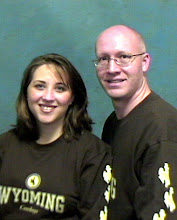I peeked in on the bees today. They are making little progress in the honey supers. I guess there probably is not a real strong nectar flow going on right now. The alfalfa flow was pretty intense at first but as the summer goes on it becomes less and less intense even though it continues to bloom. As the hay alfalfa grows after it is cut and blooms again we should get another strong flow for about a week or so. I understand that spotted knapweed is blooming right now in other parts of the country. Do we even have spotted knapweed here in Wyoming? And if so, do we have enough around Lovell to even make a difference?
Anyway, I checked them out last week and found that Virginia still had no eggs. I could have moved a frame of eggs from Georgia over to Virginia and let them raise a new queen, but that would have taken extra time to raise her, wait for her to mate, and then wait for her to get into a good laying routine. I decided to order a Russian hybrid queen from
The Walter T Kelley Company. They could not ship her this week due to the high heat in the
Midwest- nobody wants a cooked queen to arrive in the mail. She will be shipped early next week. The queen plus shipping and handling cost about $30- now that's an expensive bug! It does seem like a lot if you think of her as just a bug, but it seems pretty reasonable to me considering all you get out of her.
I decided to go with a Russian hybrid for a few of reasons. I have heard that they are hard workers and don't mind chilly rainy weather. I have read comments from other beekeepers in the
Beesource forums that Russians will get out and start working before the sun is all the way up and even when it is chilly and rainy. They have said that when their other bees are tucked away inside the hives the Russian are out working. Another reason is that Russians apparently build up more slowly in the spring. That might not be good for southern beekeepers who need big numbers for strong nectar flows in March, but I am hoping that it will translate into fewer bees and thus less swarming before the big nectar flow starts in June. I have also read that they are a very hardy breed and over-winter better than other breeds and that they are more naturally resistant to mites,
nosema, and other pests. These last reasons are not as critical to me as I have not seen a single
varroa mite or any other pest in the three years I have had my bees, they have not had any problem over-
wintering, and so far
nosema has not been bad enough to cause any lasting effect on either hive.
I mentioned in my last post that Georgia had filled the queen
excluder in with wax and had effectively sealed the workers out of the supers. I had cleaned out the
excluder and placed it back on the hive. Last week they were in the process of sealing it off again, so I removed it completely. Today I was a little worried that the queen might have moved up and laid eggs in the honey supers. Both of the supers were full of bees but there were no eggs or brood up there. That is good. Last year I removed the
excluder and ended up with
brood in the supers and then had a heck of a time
getting the queen back down in the deep hive bodies.
So there we are- Virginia is still queenless with four supers. The bees are making slow progress filling them up with honey. Her Russian hybrid queen should arrive sometime next week. Georgia is queen-right and is also making slow progress in the two supers on top of her hive.
Some good news- Chris and the kids are coming home today! I have not seen them for 2 weeks. It will be so nice to have everybody home again. They are also bringing the camera back with them so next post there should be some pictures to accompany all this text.











